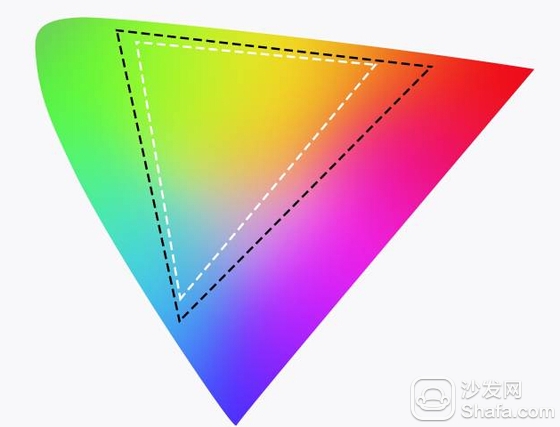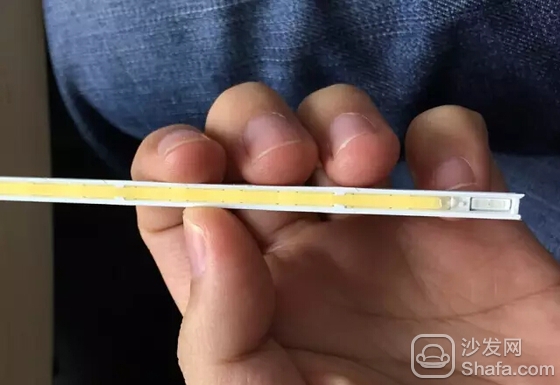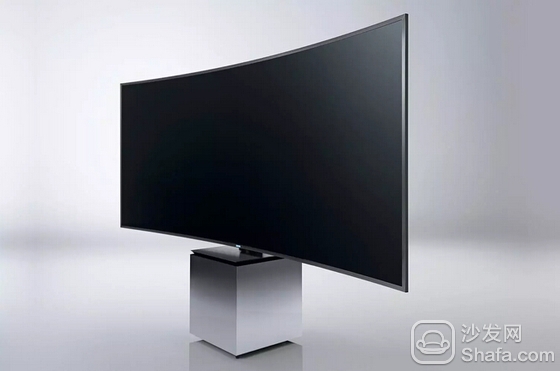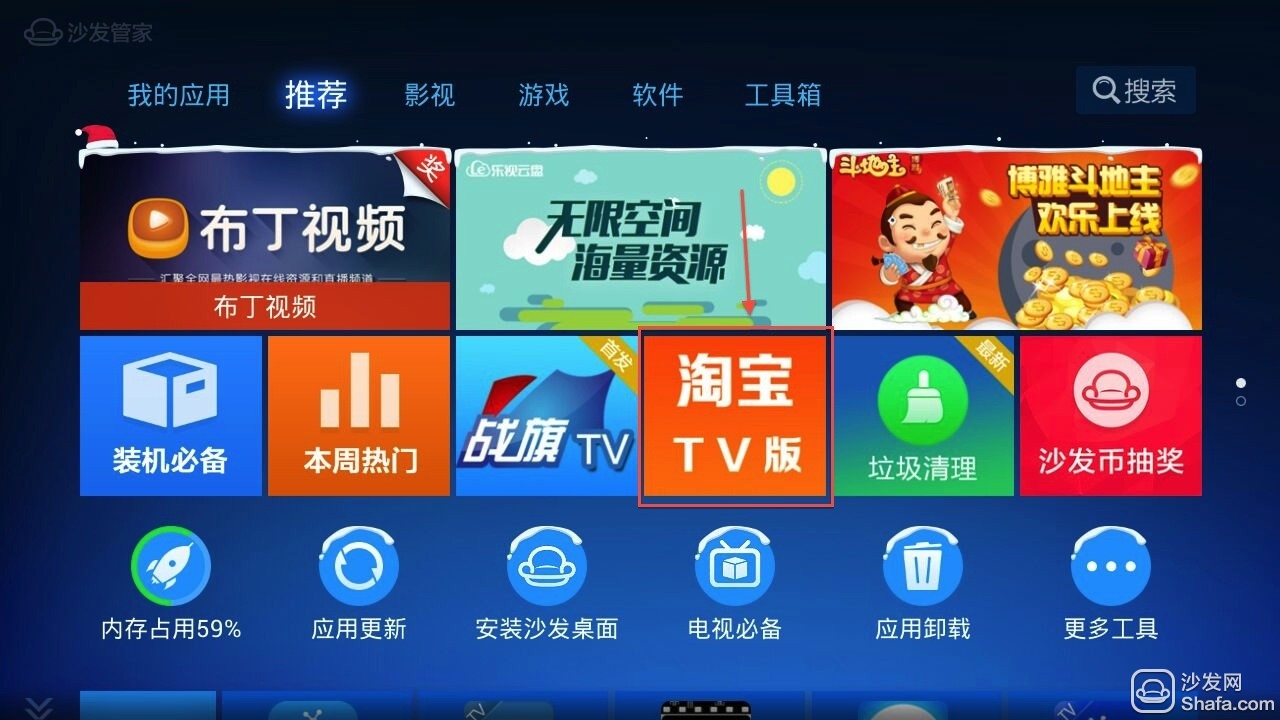At the end of the year, the word "quantum dot" suddenly rose in the TV industry. First, TCL and Changhong introduced new TVs based on quantum dot technology, and then Samsung and LG also disclosed products using similar technologies at the CES Consumer Electronics Show in the United States. So, where is quantum dot sacred, and does TV consider it in 2015? This is the topic we are discussing today.
Where is QD TV?
Since the recent title with "QD TV" often appears on the Internet, many friends may first think that this is a new thing like plasma TV. In fact, Quantum-dot TV is also a LCD TV. The biggest difference from LCD TVs in the past is that it uses a brand-new backlight technology. Based on this technology, the display quality of TVs has been significantly improved.
Since the popularity of flat-panel televisions began in 2006, LCD TVs have gradually eliminated CRT TVs, rear-projection TVs and plasma TVs with their industrial advantages. However, the problem of poor display of LCD televisions has been recognized. This is mainly due to the fact that compared with plasma: LCD TVs have low contrast (resulting in darkness is not deep enough), low color gamut (cause the color is not bright enough), and long response time (watching games) There will be smears.) Quantum-dot TV solves the problem of low color gamut among these three problems and surpasses plasma TV in one stroke.

In general terms, the color gamut of a TV can be understood as the range of colors that can be displayed. The wider the color gamut, the better the color rendering effect (of course, depends on the manufacturer's color level). NTSC color gamut standards are commonly used in the TV industry. We can use objective values ​​to understand the color gamut level of different types of TVs.
NTSC color gamut coverage CIE1931 values ​​for common display devices (bigger is better):
High-end CRT TV 70%
Plasma TV 81%
Ordinary LED LCD TV 68-72%
Quantum dot LCD TV 110%
OLED TV 85% (LG brand)
This comparison shows that QD TV is based on mature LCD technology, but the coverage of color gamut is not inferior to OLED TV which is considered to be the future star. It is really attractive. However, we should also clearly recognize that the color gamut is only one part, and plasma and OLED still have an overwhelming advantage in contrast and response time.

After consulting the professionals, the author learned that: Traditional LCD TVs use white LEDs as the backlight source, which has become the mainstream with high performance-to-price ratio. However, in this white light component, the color purity of red and green light is not high, and it is destined to the color gamut. The performance is not ideal. The quantum dot TV uses a blue LED as a backlight. This blue light reacts with very fine nanoparticles when it passes through a material medium containing cadmium. Known as quantum dots, they should actually be called nano-points to be more precise) and emit very pure red and green light.
In this way, the three primary colors are put together, and the pure white light is used as the backlight of the LCD TV. Therefore, the color gamut of the QDTV is very satisfactory. In other words, the essence of quantum dots is a kind of backlight technology.
However, what the aforementioned cadmium-containing materials are made into is divided into two major schools. One is made into thin film, covered behind the LCD, its cost will increase dramatically with the size of the screen, so it is suitable for small screen devices such as mobile phones and tablet computers; the other is Color IQ technology developed by QD Vision of the United States, The cadmium-containing material is made into a thin tube and blocked in front of the LED tube, which has an advantage in cost. At present, most QD TVs adopt such a scheme.
Although the new term Quantum-dot TV has only recently begun to appear, the technology used has long been practical. After consulting the reporters, we discovered that in 2013, Sony introduced a technology called “TRILUMINOS†and applied it to high-end models. This is actually based on the Color IQ technology developed by QD Vision of the United States.
As for why other manufacturers have begun to push quantum dot technology? In the words of a television industry person, they were busy promoting smart TVs in 2013. In 2014, they went to promote 4K ultra-high-definition TVs. It was only until 2015 that quantum dots were met.
The attitude of each TV brand
Quantum dot technology has drastically changed the structure of the backlight, and the use of new materials has improved the display effect, and the manufacturing cost has naturally increased a lot. The reporter learned from professionals that, in the case of a 50-inch television set, the cost will increase by 50-60 dollars if it uses QD technology, accounting for more than 10% of the cost. This cost is destined to quantum dots can only be used in the high-end models, and the attitude of each brand is not exactly the same.
Sony had launched a series of TVs using quantum dot technology as early as 2013, but Sony itself named it as “Trick Charm†technology. Up to now, the brand has covered many types of mid-to-high-end products. The cheapest one is 49 inches and the price is more than 8,000 yuan. It is not cheap.
At Samsung's CES Consumer Electronics Show in early January, Samsung introduced a series of TVs called SUHD TV. Actually, Quantum Dot Technology is used to achieve more than 100% NTSC color gamut. Another feature of this aircraft is the Tizen operating system developed by Samsung. On February 10, at the Samsung Forum in Hong Kong, SUHD TV debuted again. This series will cover 9 sizes ranging from 48 inches to 88 inches. Consumers can have a wider choice of options.
LG
LG also exhibited its own Quantum-dot TV at CES, but its name was "Color Prime 臻 色 色 色 色 色 , , , , , , , , , , , , ,."
Hisense Hisense's name of its Quantum Dot TV is "NEW ULED", which sounds like an upgraded version of Hisense ULED in the past, but it should actually adopt a brand-new technology. CES Shanghai Shinco has exhibited a NEW ULED TV. However, after the reporters communicated with Hisense staff, they learned that the product should still be available for a period of time in China, at least for the Chinese lunar year.
TCL
As early as mid-December 2014, TCL had already released its own Quantum-dot TV in the country, and the 55-inch 4K ultra high-definition model was priced at 12,999 yuan. TCL Multimedia CEO Hao Yi said that it will produce more QD TVs in the future and the price is expected to decrease.
Changhong At the end of December 2014, Changhong introduced the 55-inch and 65-inch two-dimension quantum dot TVs. Both of them are high-end machines, which also include curved screen models. The specific selling price has not been disclosed.
The communication between Skyworth and Konka's authors and related staff learned that Skyworth and Konka currently have no plans to launch quantum dot TV. Skyworth will continue to boost WRGB four-color ultra high-definition television in 2015, and Konka plans to cooperate with internet companies. .
 Question: Is it worth buying a quantum TV?
Question: Is it worth buying a quantum TV?
From the point of view of the display effect, quantum dot TV has achieved a dramatic improvement in mature LCD technology, which is certainly worth buying. But for the vast majority of our consumers, the budget is also an important factor in the decision to purchase, so we have to consider a few more points.
Take Sony, the most popular model of QD TVs, as an example. If we compare them carefully, we will find that QD TVs are twice as expensive as traditional models in the 48-50-inch medium-sized segment; and large-size segments over 65 inches are The difference between QD TV and traditional models of the same level is much smaller.
Looking at TCL, the previous generation of the 55-inch flagship is now priced at 10,999 yuan, and the newly released 55-inch quantum dot TV is priced at 12,999 yuan, which is only 2,000 yuan more expensive.
This shows that if your budget is to buy a large-sized flagship machine, you don't have to hesitate to choose a quantum dot model; if you have a limited budget and want to buy a medium-sized TV, do not consider quantum dots for the time being. The current price is not. Cost-effective. Or wait for a year and a half, the price of QD TVs will drop to normal level after the scale up. This is also a precedent. When LED TVs came out, they were very expensive and now they are everywhere.
Where is QD TV?
Since the recent title with "QD TV" often appears on the Internet, many friends may first think that this is a new thing like plasma TV. In fact, Quantum-dot TV is also a LCD TV. The biggest difference from LCD TVs in the past is that it uses a brand-new backlight technology. Based on this technology, the display quality of TVs has been significantly improved.
Since the popularity of flat-panel televisions began in 2006, LCD TVs have gradually eliminated CRT TVs, rear-projection TVs and plasma TVs with their industrial advantages. However, the problem of poor display of LCD televisions has been recognized. This is mainly due to the fact that compared with plasma: LCD TVs have low contrast (resulting in darkness is not deep enough), low color gamut (cause the color is not bright enough), and long response time (watching games) There will be smears.) Quantum-dot TV solves the problem of low color gamut among these three problems and surpasses plasma TV in one stroke.

(The black dotted line is the color gamut of the quantum dot TV, and the white dotted line is the traditional TV color gamut)
TIPS: What is a color gamut? In general terms, the color gamut of a TV can be understood as the range of colors that can be displayed. The wider the color gamut, the better the color rendering effect (of course, depends on the manufacturer's color level). NTSC color gamut standards are commonly used in the TV industry. We can use objective values ​​to understand the color gamut level of different types of TVs.
NTSC color gamut coverage CIE1931 values ​​for common display devices (bigger is better):
High-end CRT TV 70%
Plasma TV 81%
Ordinary LED LCD TV 68-72%
Quantum dot LCD TV 110%
OLED TV 85% (LG brand)
This comparison shows that QD TV is based on mature LCD technology, but the coverage of color gamut is not inferior to OLED TV which is considered to be the future star. It is really attractive. However, we should also clearly recognize that the color gamut is only one part, and plasma and OLED still have an overwhelming advantage in contrast and response time.

(The yellow substance in the tube is the mysterious quantum dot material)
Quantum-dot TV's Past Life After consulting the professionals, the author learned that: Traditional LCD TVs use white LEDs as the backlight source, which has become the mainstream with high performance-to-price ratio. However, in this white light component, the color purity of red and green light is not high, and it is destined to the color gamut. The performance is not ideal. The quantum dot TV uses a blue LED as a backlight. This blue light reacts with very fine nanoparticles when it passes through a material medium containing cadmium. Known as quantum dots, they should actually be called nano-points to be more precise) and emit very pure red and green light.
In this way, the three primary colors are put together, and the pure white light is used as the backlight of the LCD TV. Therefore, the color gamut of the QDTV is very satisfactory. In other words, the essence of quantum dots is a kind of backlight technology.
However, what the aforementioned cadmium-containing materials are made into is divided into two major schools. One is made into thin film, covered behind the LCD, its cost will increase dramatically with the size of the screen, so it is suitable for small screen devices such as mobile phones and tablet computers; the other is Color IQ technology developed by QD Vision of the United States, The cadmium-containing material is made into a thin tube and blocked in front of the LED tube, which has an advantage in cost. At present, most QD TVs adopt such a scheme.
Although the new term Quantum-dot TV has only recently begun to appear, the technology used has long been practical. After consulting the reporters, we discovered that in 2013, Sony introduced a technology called “TRILUMINOS†and applied it to high-end models. This is actually based on the Color IQ technology developed by QD Vision of the United States.
As for why other manufacturers have begun to push quantum dot technology? In the words of a television industry person, they were busy promoting smart TVs in 2013. In 2014, they went to promote 4K ultra-high-definition TVs. It was only until 2015 that quantum dots were met.
The attitude of each TV brand
Quantum dot technology has drastically changed the structure of the backlight, and the use of new materials has improved the display effect, and the manufacturing cost has naturally increased a lot. The reporter learned from professionals that, in the case of a 50-inch television set, the cost will increase by 50-60 dollars if it uses QD technology, accounting for more than 10% of the cost. This cost is destined to quantum dots can only be used in the high-end models, and the attitude of each brand is not exactly the same.
Sony had launched a series of TVs using quantum dot technology as early as 2013, but Sony itself named it as “Trick Charm†technology. Up to now, the brand has covered many types of mid-to-high-end products. The cheapest one is 49 inches and the price is more than 8,000 yuan. It is not cheap.
At Samsung's CES Consumer Electronics Show in early January, Samsung introduced a series of TVs called SUHD TV. Actually, Quantum Dot Technology is used to achieve more than 100% NTSC color gamut. Another feature of this aircraft is the Tizen operating system developed by Samsung. On February 10, at the Samsung Forum in Hong Kong, SUHD TV debuted again. This series will cover 9 sizes ranging from 48 inches to 88 inches. Consumers can have a wider choice of options.
LG
LG also exhibited its own Quantum-dot TV at CES, but its name was "Color Prime 臻 色 色 色 色 色 , , , , , , , , , , , , ,."
Hisense Hisense's name of its Quantum Dot TV is "NEW ULED", which sounds like an upgraded version of Hisense ULED in the past, but it should actually adopt a brand-new technology. CES Shanghai Shinco has exhibited a NEW ULED TV. However, after the reporters communicated with Hisense staff, they learned that the product should still be available for a period of time in China, at least for the Chinese lunar year.
TCL
As early as mid-December 2014, TCL had already released its own Quantum-dot TV in the country, and the 55-inch 4K ultra high-definition model was priced at 12,999 yuan. TCL Multimedia CEO Hao Yi said that it will produce more QD TVs in the future and the price is expected to decrease.
Changhong At the end of December 2014, Changhong introduced the 55-inch and 65-inch two-dimension quantum dot TVs. Both of them are high-end machines, which also include curved screen models. The specific selling price has not been disclosed.
The communication between Skyworth and Konka's authors and related staff learned that Skyworth and Konka currently have no plans to launch quantum dot TV. Skyworth will continue to boost WRGB four-color ultra high-definition television in 2015, and Konka plans to cooperate with internet companies. .

From the point of view of the display effect, quantum dot TV has achieved a dramatic improvement in mature LCD technology, which is certainly worth buying. But for the vast majority of our consumers, the budget is also an important factor in the decision to purchase, so we have to consider a few more points.
Take Sony, the most popular model of QD TVs, as an example. If we compare them carefully, we will find that QD TVs are twice as expensive as traditional models in the 48-50-inch medium-sized segment; and large-size segments over 65 inches are The difference between QD TV and traditional models of the same level is much smaller.
Looking at TCL, the previous generation of the 55-inch flagship is now priced at 10,999 yuan, and the newly released 55-inch quantum dot TV is priced at 12,999 yuan, which is only 2,000 yuan more expensive.
This shows that if your budget is to buy a large-sized flagship machine, you don't have to hesitate to choose a quantum dot model; if you have a limited budget and want to buy a medium-sized TV, do not consider quantum dots for the time being. The current price is not. Cost-effective. Or wait for a year and a half, the price of QD TVs will drop to normal level after the scale up. This is also a precedent. When LED TVs came out, they were very expensive and now they are everywhere.
Recommended installation sofa butler, download address: http://app.shafa.com/
